Road trip through Namibia - Damaraland
We are overwhelmed by the endless desolation as we drive through the vast stone desert of Damaraland. Isolated from the outside world, we come face to face with the unique desert elephant. We discover ancient petroglyphs and traditional Damara culture. Damaraland Camp, Namibia's oldest camp, is our home base.
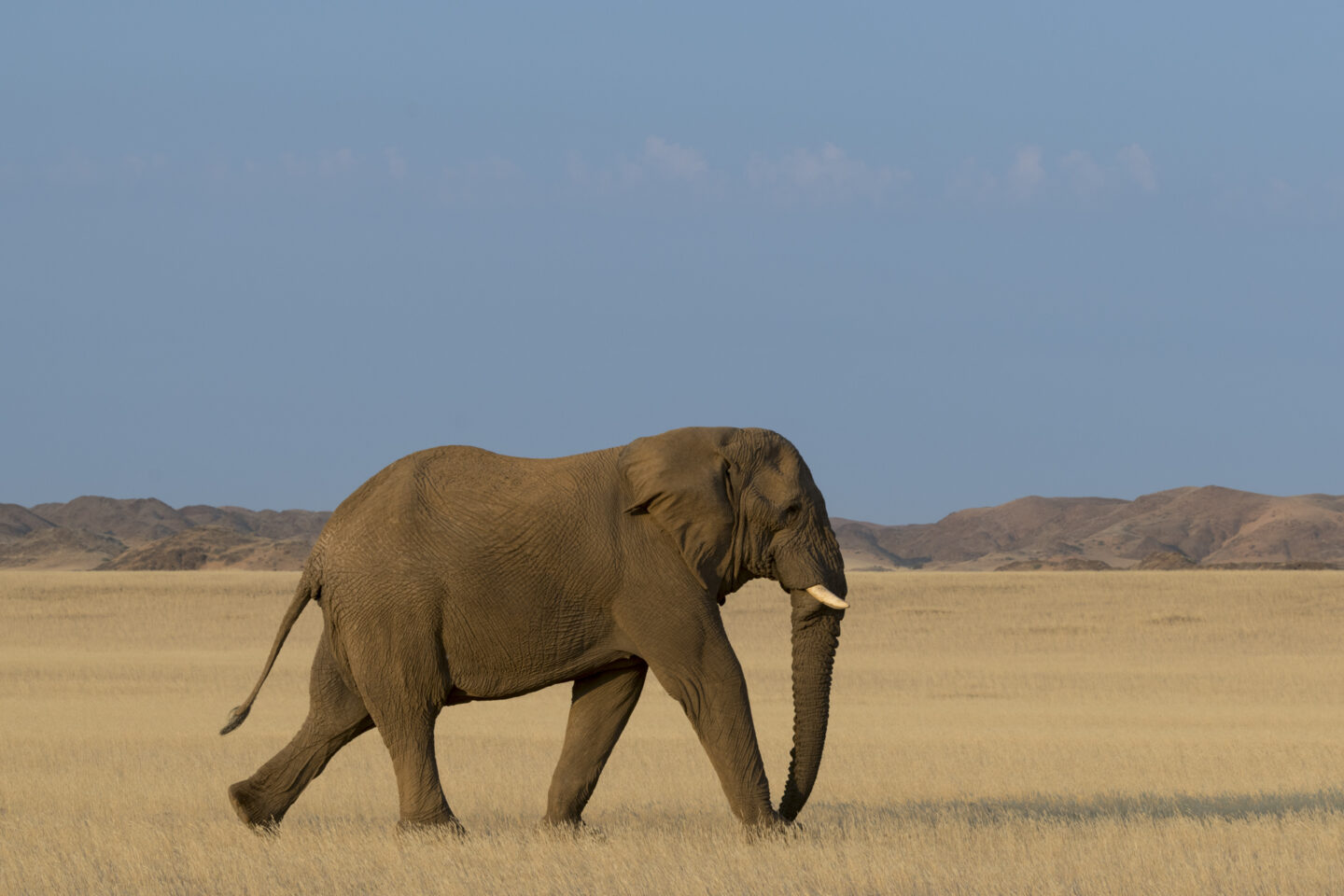
Damaraland, the true African wilderness
The road from the Namibian coast to Etosha inevitably passes through Damaraland, one of Africa's last true wildernesses. The vast landscape of rocks and stones has no fences and wildlife roams freely. The flora and fauna are unique. The rare desert rhino and desert elephant have adapted to the harsh conditions of this desolate wasteland and travel long distances in search of water.
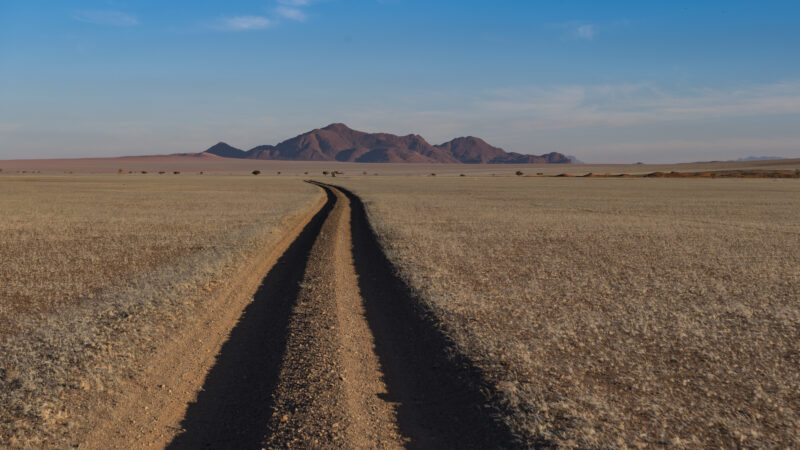
The crickets here are huge, at least three times the size of ours. They often sit on the Euphorbia damarana bush, the most poisonous plant in Namibia, but not for everyone. Rhino, kudu and springbok secrete an enzyme during digestion that breaks down the euphorbia's poison, leaving them untouched. The sap of the euphorbia is used by the Bushmen for hunting. They extract the sap and soak their arrowheads in it.

Damaraland is definitely worth a stop on your Namibia trip. It is very desolate, and many special places are difficult to reach. A 4X4 is a must and you will get the most out of your visit with a local guide.
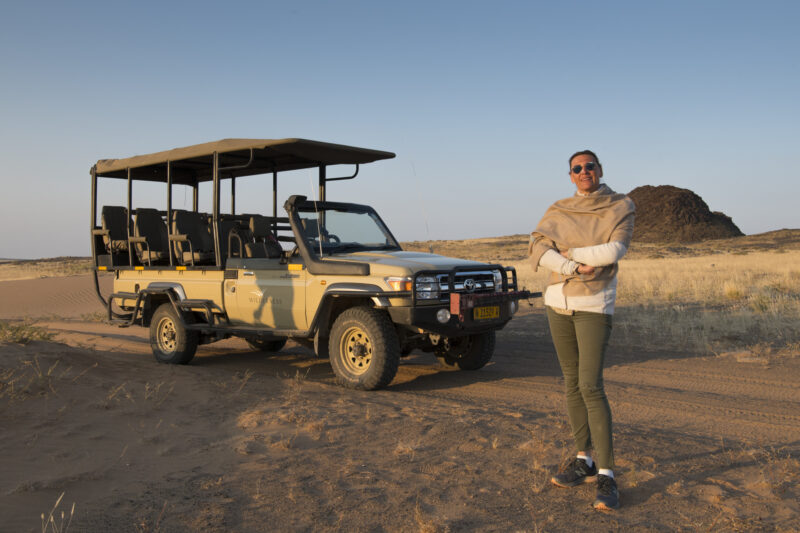
Damaraland Camp, Namibia's oldest camp
We stay at Damaraland Camp, Namibia's oldest camp, situated in the Huab River valley. The fully renovated camp exudes serenity and offers magnificent views of the unspoiled wilderness and the peaks of the Brandberg Massif. The ten suites are built in adobe style on stilts. The communal lounge and dining table are in a cozy open space with a fireplace and terrace.
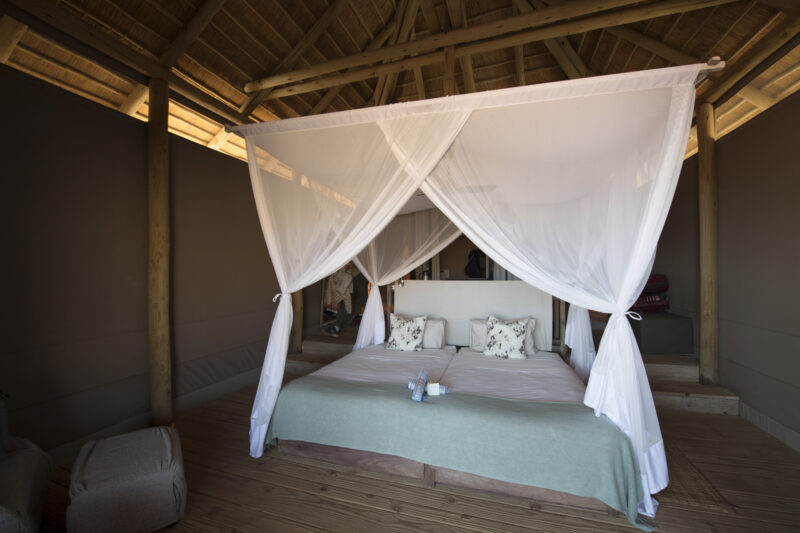
The lodge is located in the Torra Conservancy, one of four nature reserves in Namibia where the local community works with tourism to ensure the conservation and peaceful coexistence of people and wildlife. Members of the Torra community enthusiastically share their culture and unique habitat during excursions and activities.
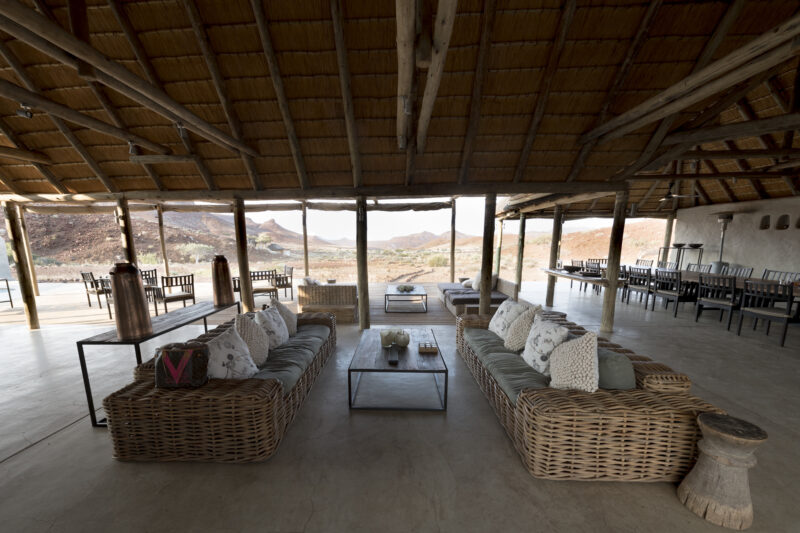
In search of the desert elephant
It is a freezing cold morning, and we sit in the open jeep, well wrapped up in a warm cape. We set out in search of desert elephants. Our guide Elias finds fresh tracks at a waterhole and decides to follow the fresh droppings. After 2 hours of tracking, we find 3 elephants. It is a female with a calf and a male. We watch them for a while and continue through a dry riverbed. After half an hour we see 4 elephants on the hillside. They are hard to distinguish because their skin color is almost identical to the rocks. Elias explains that the rare desert elephant is smaller than the common African elephant. It also has longer legs and larger feet.
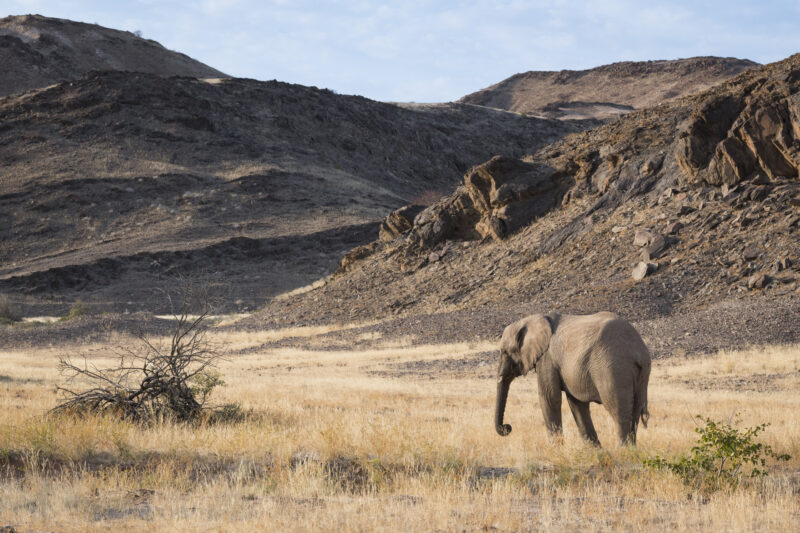
Elias rides up a hill to get a better view of the elephants and their surroundings. We spot the rest of the group standing in a natural depression. Among them is a small baby, not yet three months old. We enjoy the view from our vantage point and see the first 3 elephants coming our way. The matriarch of the group comes down the slope at great speed and approaches the other female. They wrap their trunks around each other and greet each other warmly. The mother of the smallest cub approaches and sniffs our scent with her trunk in the air. We are dangerously close to the elephants. We retreat immediately. Instead of taking the gravel road, we head for Twyfelfontein through the bush.
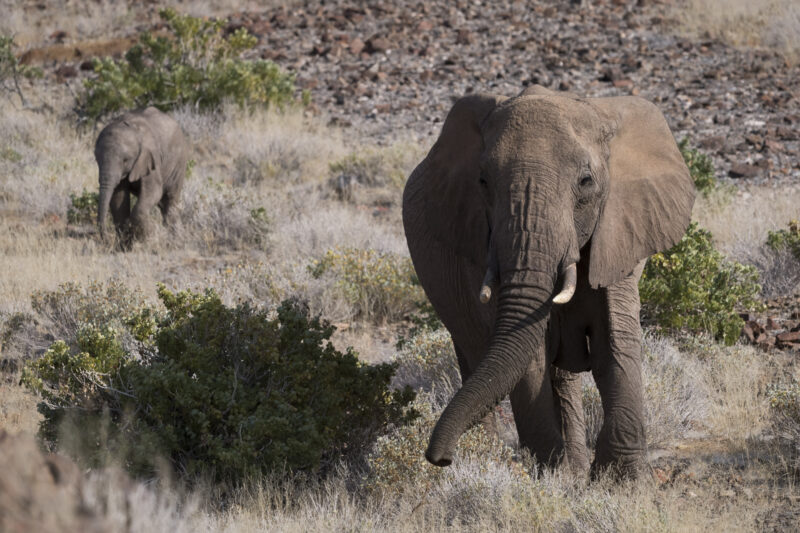
Twyfelfontein, Namibia's first World Heritage Site
Twyfelfontein is the South African name for the local spring and means doubtful source. The spring is no longer productive but ensured the survival of large groups of animals and nomadic San tribes 2,000 to 6,000 years ago. Around Twyfelfontein there are numerous drawings that were carved into the red sandy rock with a quartz stone. The petroglyphs were not painted with natural dyes and are therefore very well preserved. The area with the millennia-old drawings is considered the largest open-air art gallery in southern Africa and has been declared a UNESCO World Heritage Site.
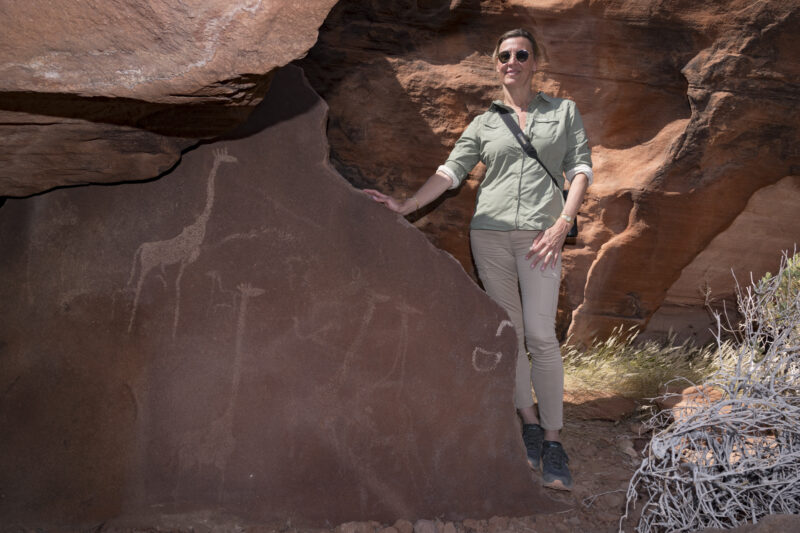
The petroglyphs depict an extraordinary variety of wildlife and clearly illustrate the rituals and beliefs of the San people. We see drawings of giraffes, rhinos, antelopes, ostriches, and even seals and a penguin. This proves that the nomadic Bushmen used to get salt from the coast to cure the meat they hunted. An unusual drawing in the collection is that of a lion with a long tail at a 90-degree angle. The end of the tail is an imprint of a lion's paw with five toes instead of four. The drawing is very unique because it represents the spirit of the shaman during shapeshifting. In this case, he takes the form of a lion. Some petroglyphs show watering holes. Others show what animals live in certain places. They are a source of communication between different nomadic tribes and a learning tool for children.
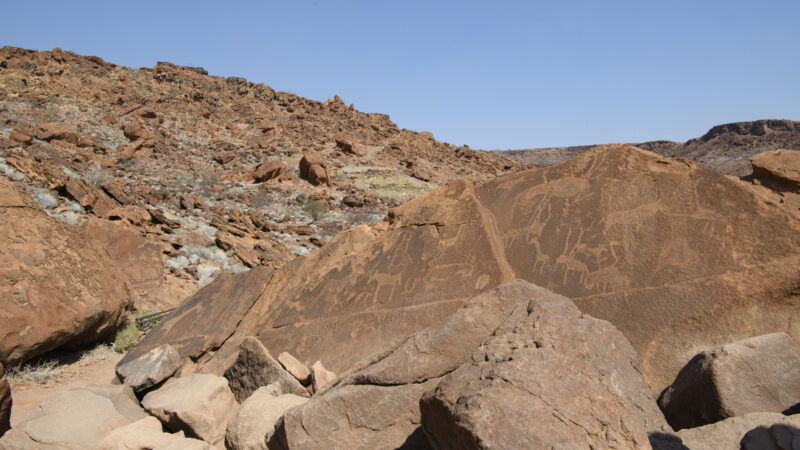
Damaraland Living Museum
After a delicious picnic under an acacia tree we arrive at the Damaraland Living Museum. The museum shows the traditional life of the Damara people. Together with the San or Bushmen, the Damara form the original population of Namibia. Like the San, they speak a typical click language. In the past the Damara were mainly hunters and herders, but today they live from agriculture and cattle breeding.
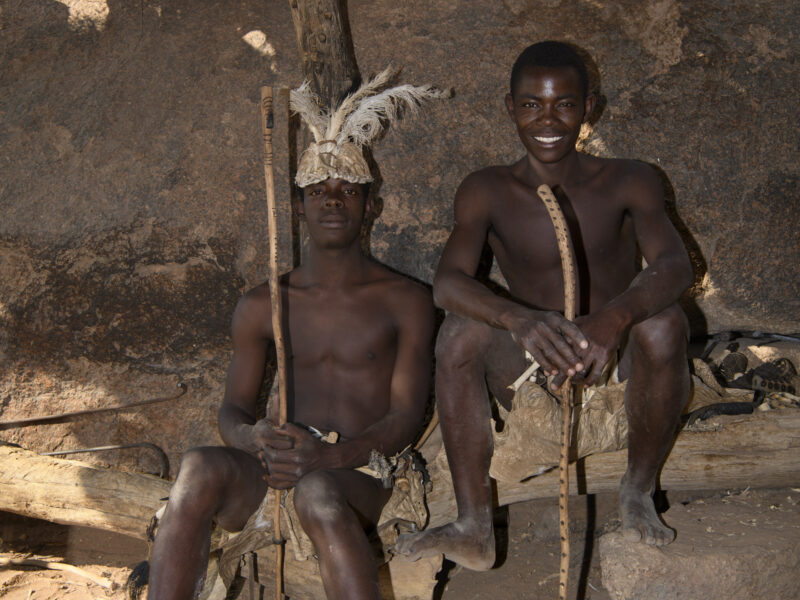
In the museum, the Damara show us how they made arrows in the past and which plants are used for medicinal purposes. The women teach me how to make jewelry from plants, berries, ostrich eggs and horns.
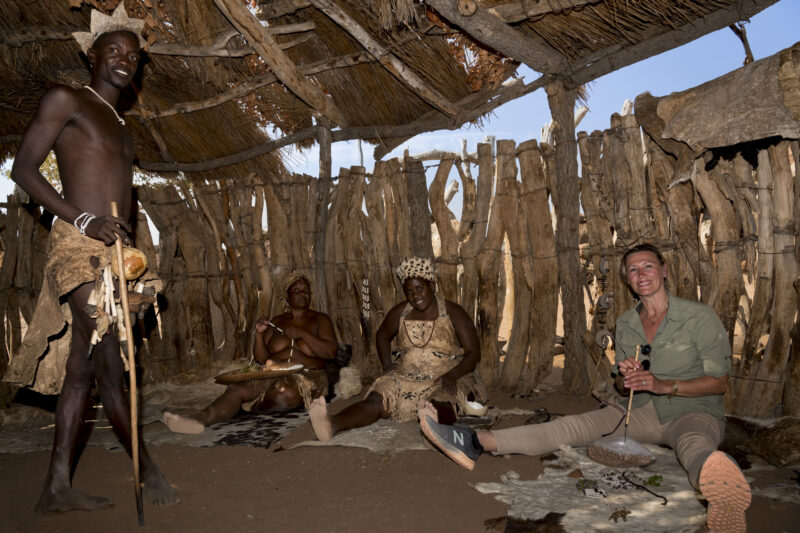
The Damara also show us how they celebrate. They invite us to join them in a traditional dance and I search with great pleasure for the rhythm of the drum.

Petrified Forest
An hour's drive from Damaraland Camp brings us to the Petrified Forest. The pieces of petrified wood are 260 million years old. When the tectonic plates separated the continents, the trees were buried under sand and clay. As a result, the wood was cut off from oxygen for a long time. The minerals present colored the wood in shades of red, gray and yellow. Over time, through erosion and upward movement of the earth's crust, the tree trunks quietly emerged. Some trunks are still almost completely intact and give the impression of being made of wood ... until you touch them.
